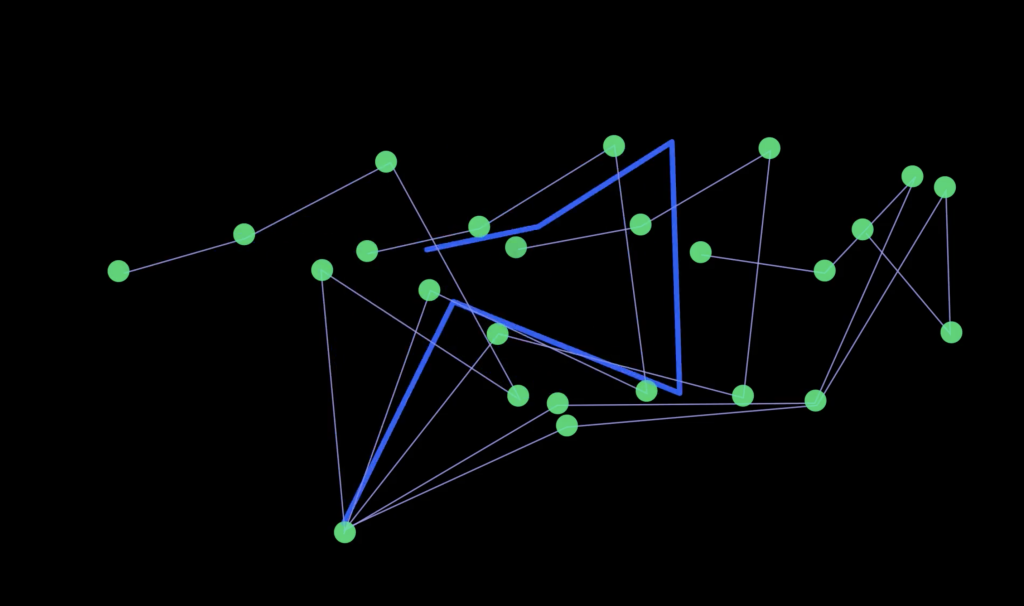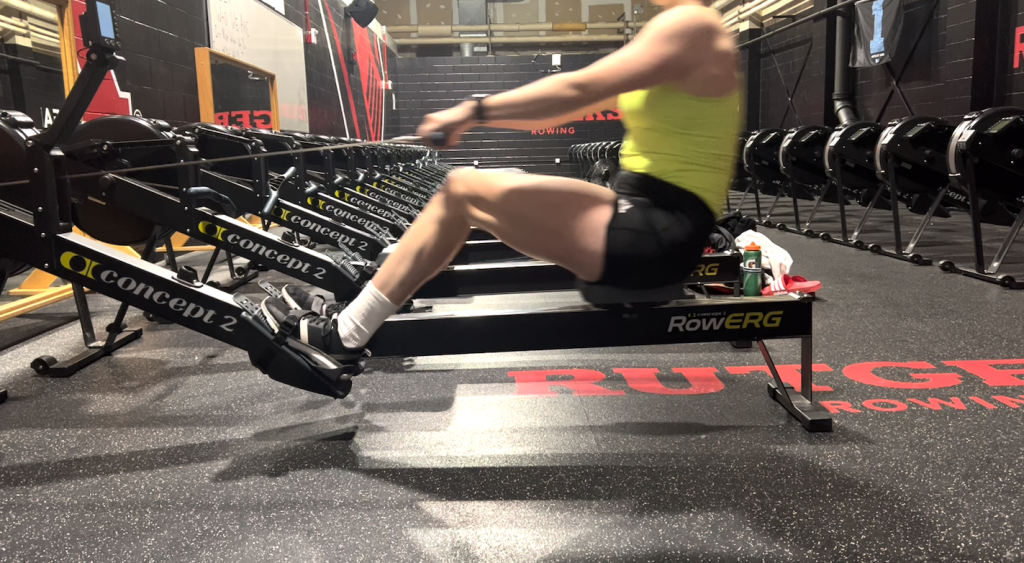MFA alum Corina Coughlan gives an overview of the research she will present as part of the Rutgers Design Research Spotlight on October 29 in Tribeca.
For the full picture RSVP: https://forms.gle/NVaWs8mbfwhXdT7VA
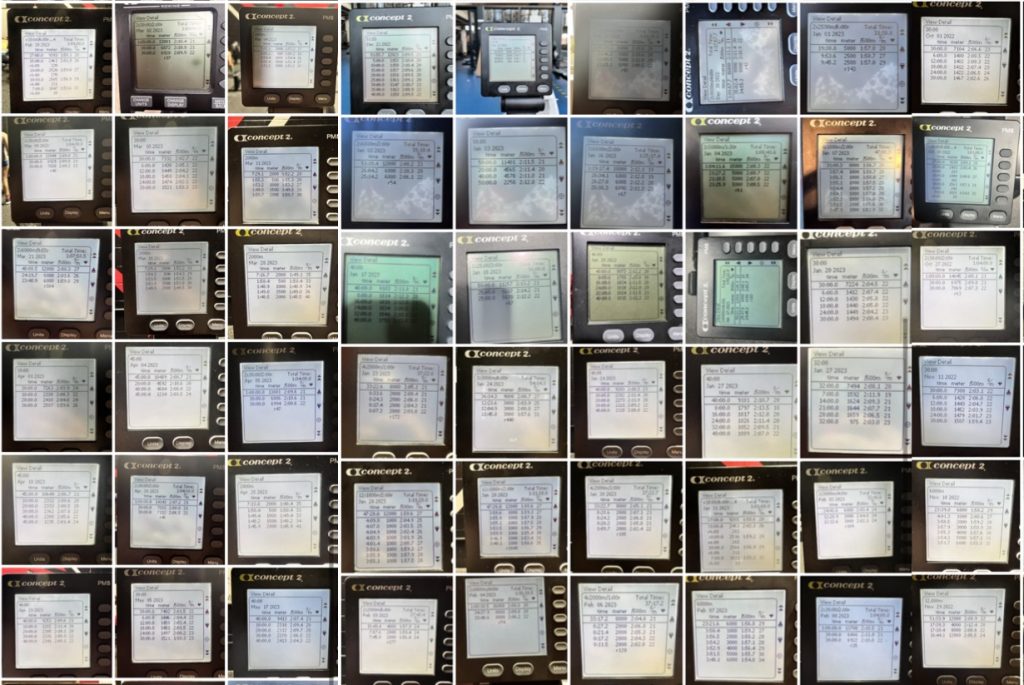
When moving to the States from Ireland for my MFA, I intended to focus my design research on sports data in relation to female athletes. I rowed at university level in Ireland and was now a Division One athlete on the Rutgers women’s rowing team. My performance has always been measured by data -collected, monitored, and ranked daily. Rowers spend much more time on specialist rowing machines name than we do on the water. For years, I have been tracking my performance through screenshots of machines and fitness wearables. So, I was deeply immersed in data about my body, yet this was exclusively quantitative, with no qualitative data. Over the course of the MFA, I expanded these limited data sets to data communication and storytelling that encompassed embodied subjectivity. Informed by data feminism, I used my personal data to question the value of qualitative data in sports performance.
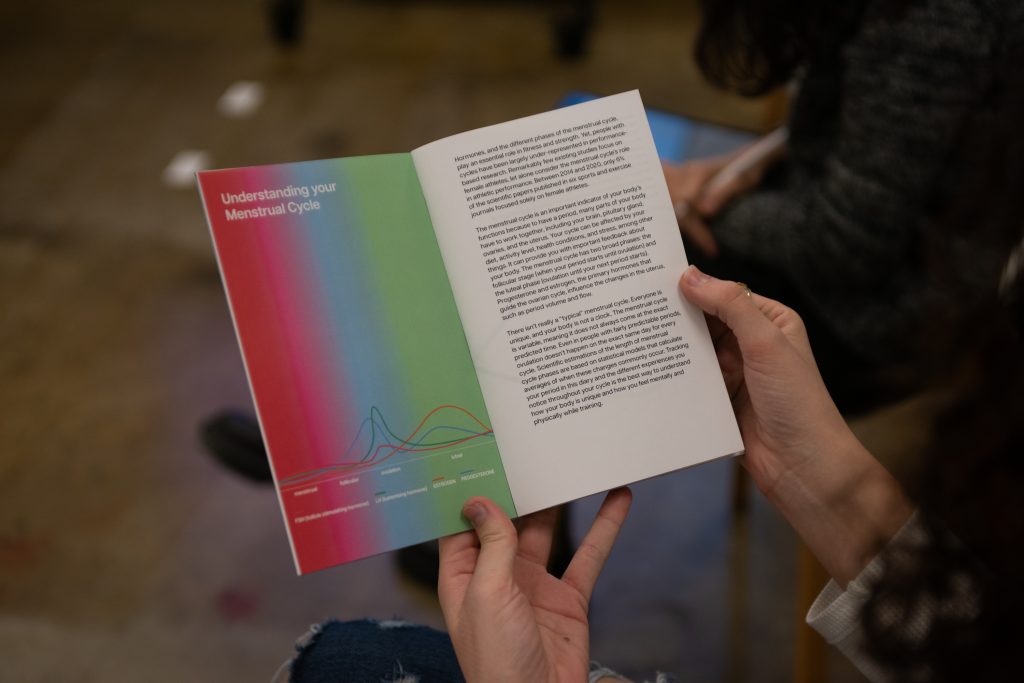
My way into this was through journaling which allowed me to listen to my body and understand what recovery methods and approaches to training were needed. This inspired me to design a training diary for menstruating athletes, providing them with detailed information on the different phases of the menstrual cycle and its relationship to sports performance. This holistic space enables athletes to give weight equally to qualitative and quantitative data. This galvanized me to have more open conversations with my coaches about how the menstrual cycle affected my training. Other women on the team then started to have these conversations with each other and coaches – which was really inspiring and empowering. Coaches, who are mostly male, rarely have these conversations otherwise.
In my second year, my exhibit Data and the Athlete brought this material together and also sent me in a new direction. As I looked at this piece, the motion graphic on the left side evoked traditional data visualization, but the video on the right side felt more anthropoid, closer to the human experience. This was a transformative moment for me. I started to feel trapped in my data, and I also began to think deeply about what gives me joy in rowing. What fascinates me about the act of rowing is the feeling of synchronized movement, from the connection between people working together in a rhythmic flow to achieve a feeling of weightlessness. The skillful calibration of humans to create forward movement is the essence of rowing and, more broadly, is the essence of human collaboration. Data cannot capture this. Ursula Le Guin’s essay Telling is Listening spoke to what it means to find connection through synchronization and her writing guided me through my practice. Humans use movement to sync up with others in order to find connections and build relationships. We rely on entrainment as we get immersed in a motion or thought once we are in sync – we fall into time with each other without realizing it. Influenced by Le Guin, my research evolved into visual storytelling around synchronous calibration.
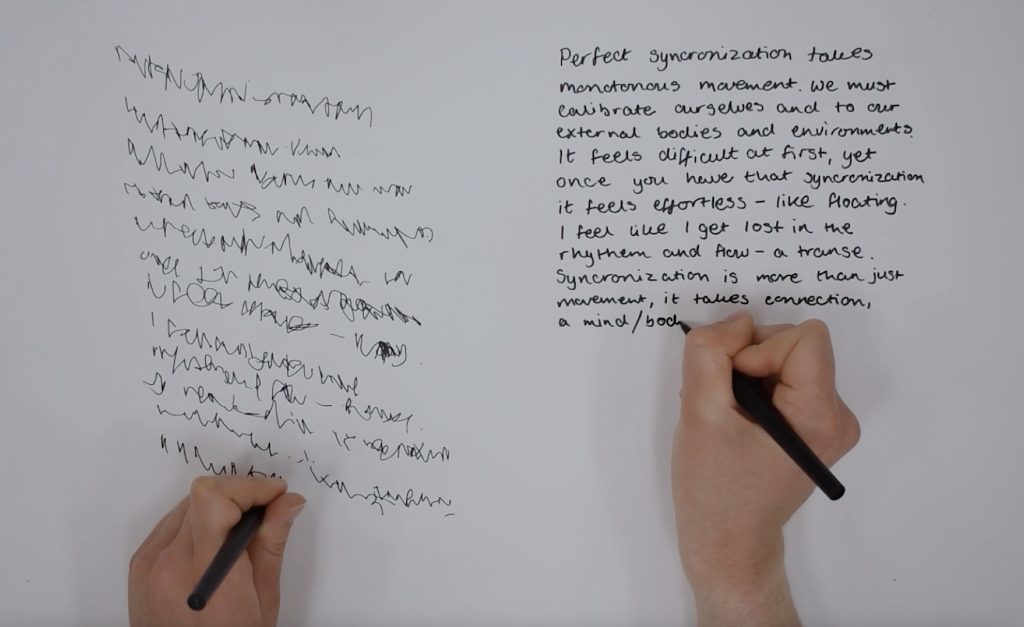
My senior thesis exhibition to calibrate included sound and video as forms of data visualization, exploring visceral data that we can hear, see, feel, or touch holistically. I also used the labor of synchronization within my own body as a visual metaphor for synchronization more generally. Rowers specialize on one side of the boat and inspired by the synchronization of left and right in rowing I began experimenting, writing with both hands simultaneously, trying to sync my left hand with my right while documenting my thoughts around synchronization and how it feels to be in and out of sync. The video installation of the left-hand annotation in comparison to the right gave a duality of perspective on the pursuit of calibration and synchronization.
Through the development of my research, I have learned that data alone cannot tell a fully human narrative. Moving away from data and focusing on embodied experience allowed me to communicate the poetry of movement that data cannnot. I have allowed myself to incorporate complexity, humanity, and imperfection into my design practice, adapting to different visualization approaches.
All images: Corina Coughlan, 2023-2024
